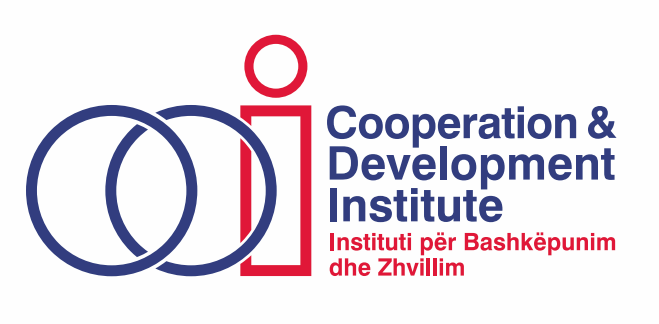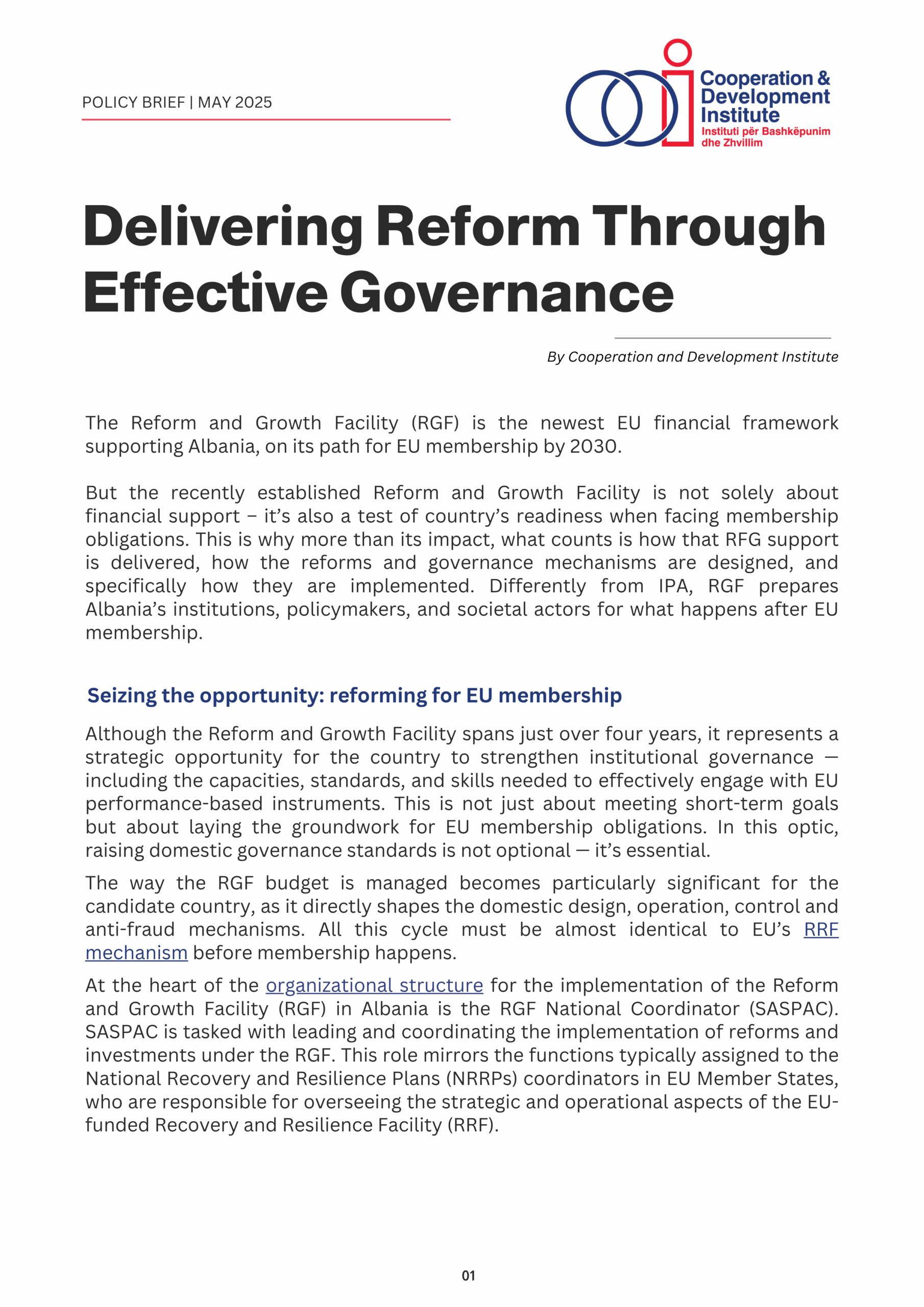For a development-centered and resilient Growth Plan

Stakeholders discuss WB Civil Society’s involvement in LIPs implementation
February 6, 2024
Connecting Youth partners kick-off activities for 2024
March 20, 2024By Krisela Hackaj
In December 2022 Cooperation and Development Institute published “EU and South-East Europe 6 in 2022: from Enlargement fatigue to an invigorating Cohesion”. It argued about the need for South-East Europe (SEE6) to step up its convergence pace with the EU. It further developed the role of the Berlin Process in steering this convergence dynamic by mobilizing a better use and a bigger amount of the EU Budget well beyond the IPA, and by bringing in focus the good governance of SEE6 institutions at every level.
On his March 2023 meeting with Chancellor Scholz, Prime Minister of Albania Edi Rama brought in the importance of convergence of WBs with EU, and the necessity for EU to make this convergence possible. Two months later, at Globsec Forum in Bratislava, he further articulated the need for a revised approach to EU financial assistance to the region, urging higher EU transfers before the SEE6 membership. Albania utilized its 2023 leadership of the Berlin Process to promote convergence and consistently advocate for new EU financial instruments – distinct from Instrument for Pre-accession (IPA) – that would favor investments over technical assistance and grants over loans.
In November 2023, the European Commission proposed a New Growth Plan for the Western Balkans (GP) and the respective Regulation Proposal establishing the Reform and Growth Facility for the Western Balkans. This instrument was endowed with a budget of EUR 6bn, out of which EUR 2 billion are grants.
Learning from EU instruments
The specific goals of the GP largely correspond to IPA’s, while its delivery mechanism mostly builds upon the ongoing Economic and Investment Plan. The GP novelty consists in the introduction of a three-layer conditionality set and of reform incentives aimed at fostering convergence and accelerate the accession pace. This robust conditionality approach implies clear and transparent evaluation procedures from the Commission.
Designed to operate bilaterally between the Commission and each WB country, the GP leverages the ongoing regional cooperation and further reinforces it. The success of the plan’s inception phase and of its subsequent implementation will hinge on qualitative, timely, realistic and locally owned reform agendas, as well as on a properly informed and motivated public administration.
While the GP incorporates some elements from the Member States Recovery and Resilience Facility (RRF), it lacks some of the best practices introduced and successfully applied by the RRF. Implementing the EU Partnership principle, establishing Monitoring Committees inclusive of social and economic partners, and introducing a Scoreboard for the Plan are some of the mechanisms and tools that Member States currently use to enhance RRF implementation. Adapted to and embedded in the Growth Plan, these practices can contribute to its inclusiveness, oversight, accountability and transparency. Moreover, they will enhance the region’s experience with Cohesion-like instruments as it prepares for the 2028-2034 Multiannual Financial Framework (MFF).
Seizing the opportunity
In the current geopolitical context and facing an unprecedented outward migration, creating the right development conditions in the Balkans becomes the region’s main objective. It should become the EU’s number one, too.
According to EBRD the region needs over 70 years for full convergence with the EU. Notwithstanding its 4 years’ timeframe and EUR 6bn budget, the Growth Plan has the potential to put the region on the rails of a sustainable development path.
Its successful implementation will be contingent upon application of good governance at every level of SEE6 institutions. For solid legitimacy and long-lasting impact, the newly introduced Enlargement instrument must prioritize inclusiveness and societal ownership. This entails adopting EU inclusiveness standards that focus on developing and engaging the local human capital and laying the societal foundations necessary for smart and sustained development dynamics.
Historically, support for infrastructure and democratic reform programmes has received the bulk of EU funding for the region. The EU’s Economic and Investment Plan for the Western Balkans (EIP) signaled that future EU funding will in part also “…promote human capital development” and “…help counter brain drain” phenomena. By December 2023, only 3 of the 59 EIP flagship investments targeted Western Balkans human capital.
As the countries’ list of reforms will be submitted to EU Commission within March 2024, we recommend that more targeted social infrastructure and human development investments are included in national Reform Agendas, at least in the same proportion as for climate-related actions.
The proposed Growth Plan for the Western Balkans is a first step to reforming enlargement and to offering accession advantages before EU membership. This is what the region needs now. To achieve its objectives and lay a solid ground for the future, it should also be aligned with on-going EU policy reviews, particularly those related to EU Cohesion, EU Single Market, and EU Common Agriculture Policies.




